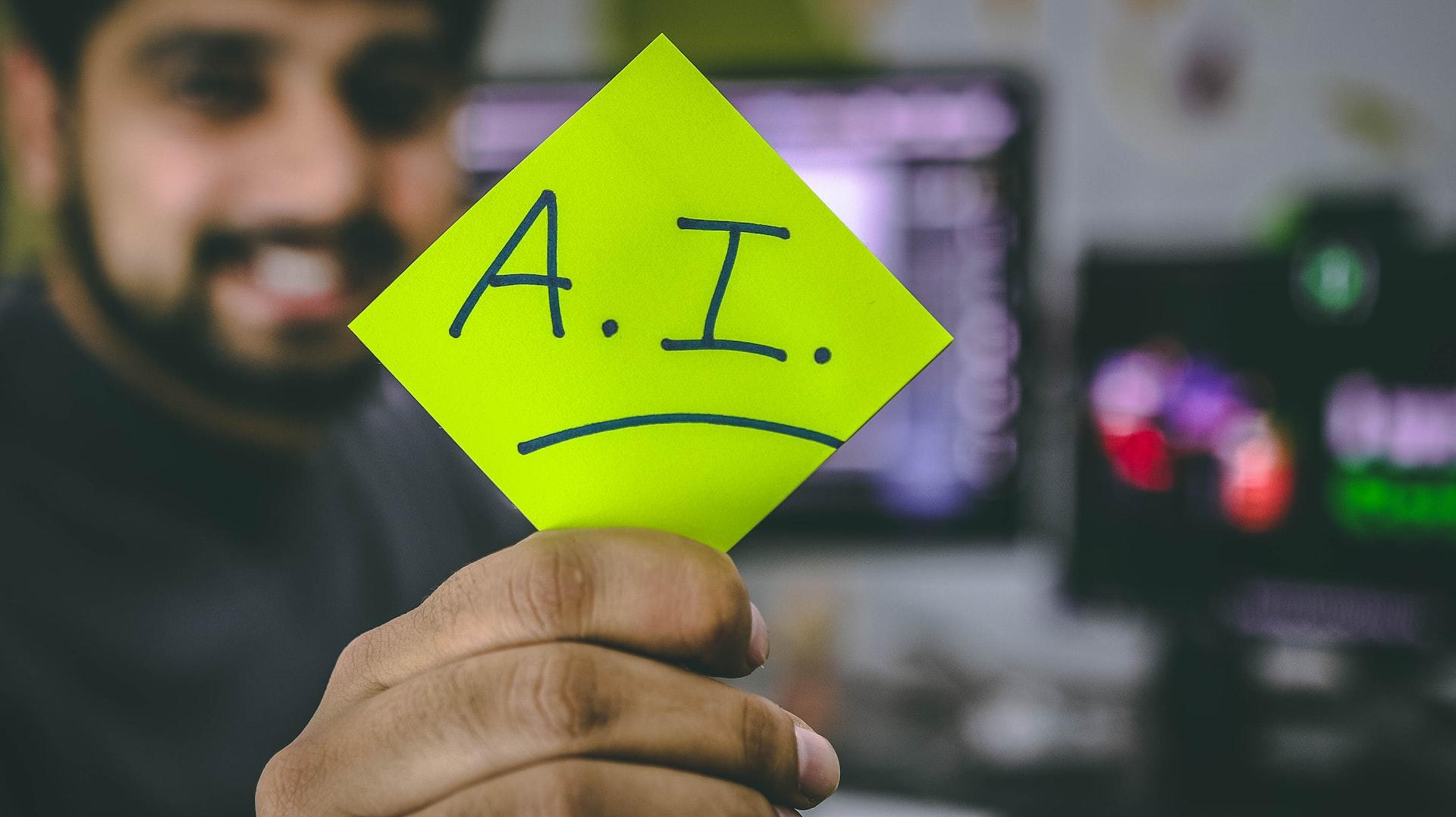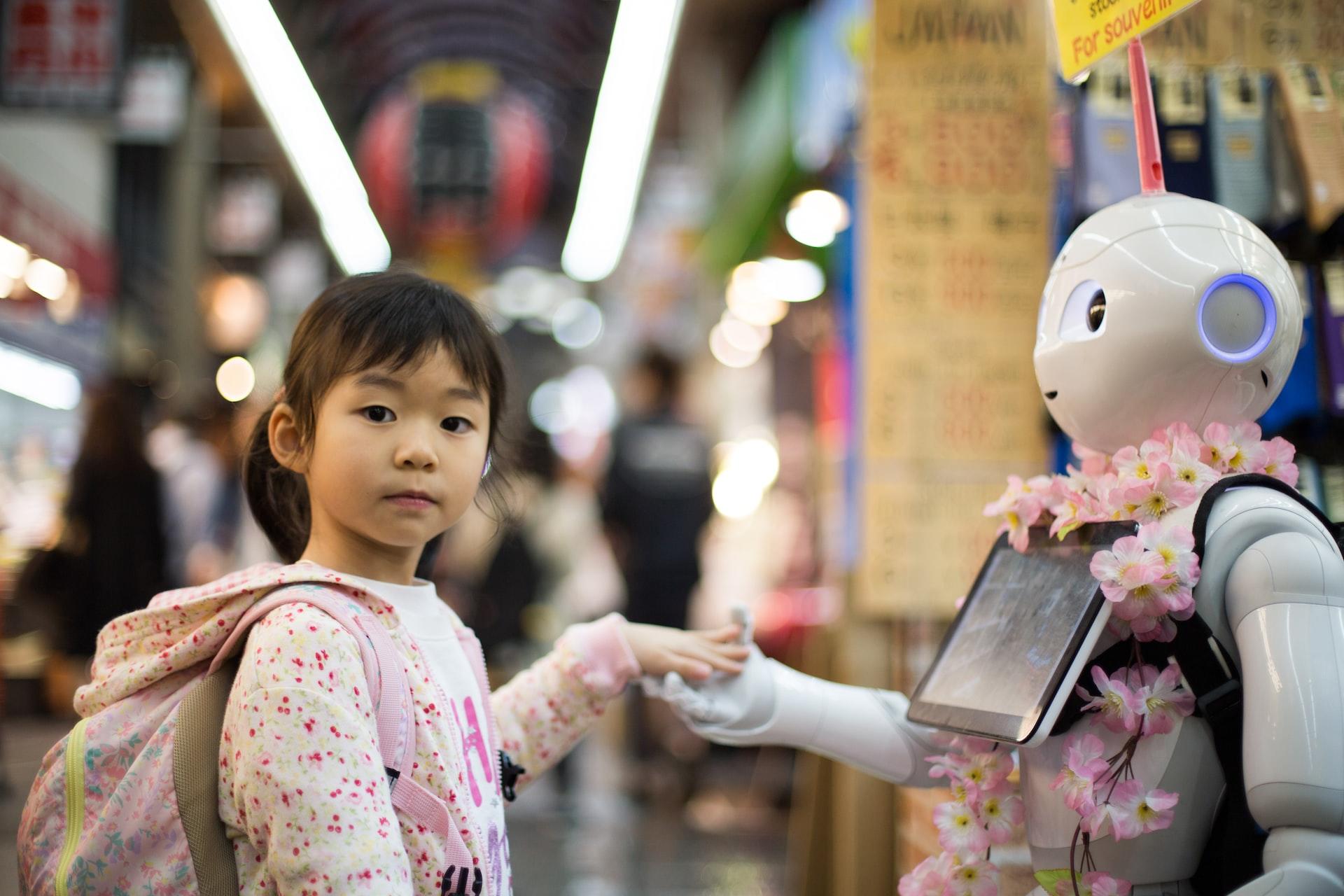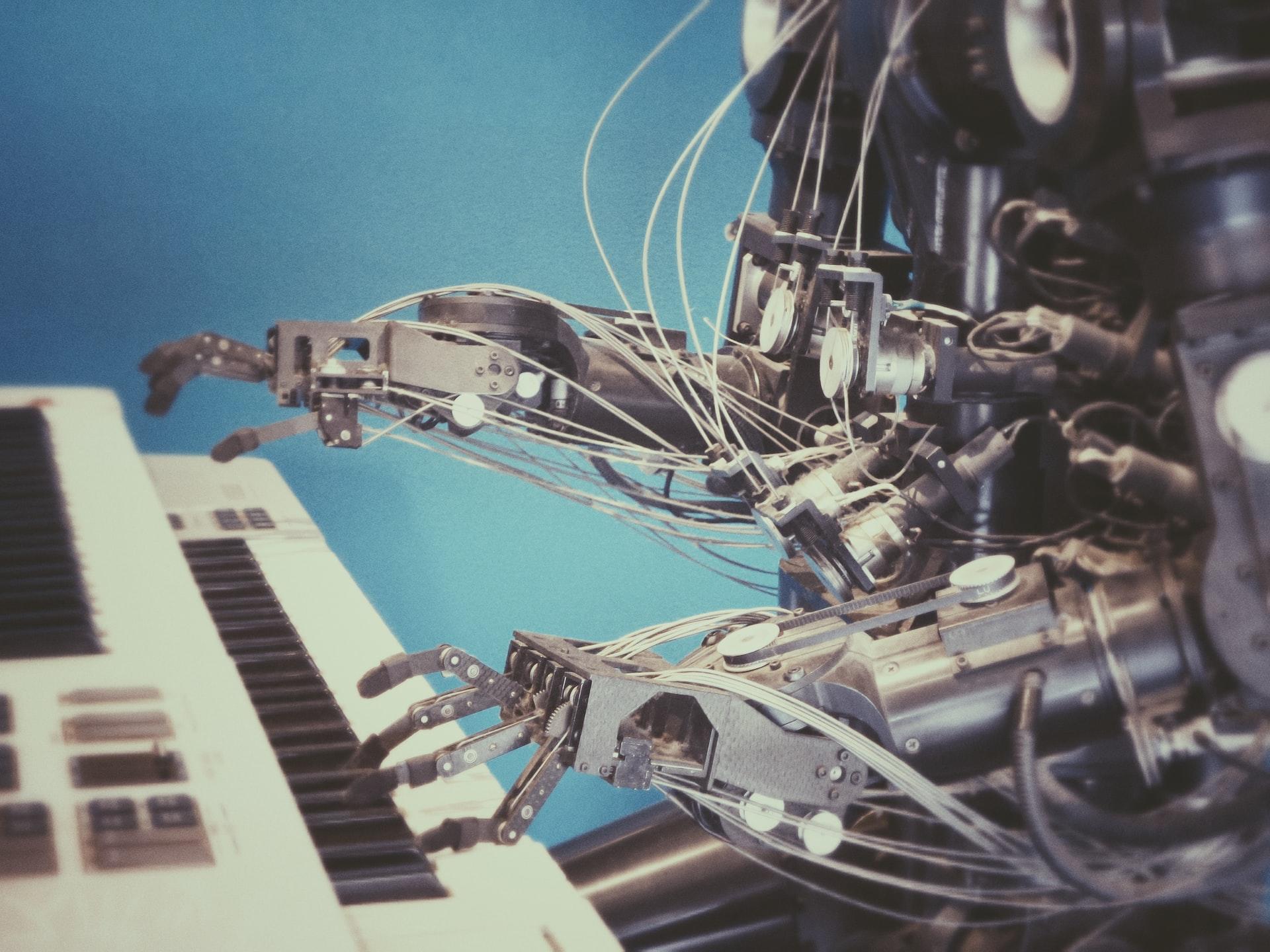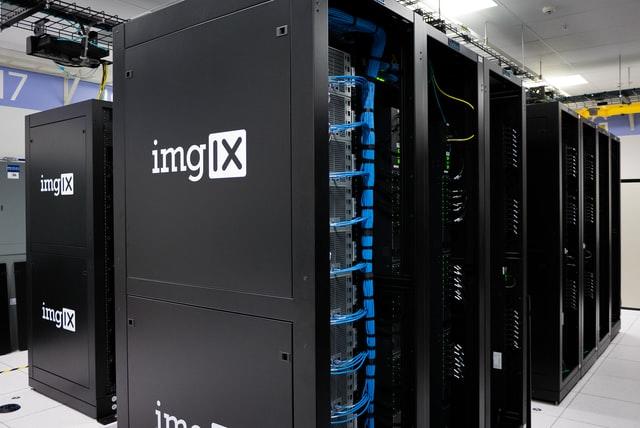We are amidst a significant shift in the application of artificial intelligence (AI). In just a few years, AI has gone from being a topic to being incorporated into consumer products and services. This is reflected in the rapid rise in AI-related patents, publications, and investments.

What Is Artificial Intelligence?
Artificial Intelligence (AI) refers to the development of computer systems that can perform tasks that would normally require human intelligence.
It involves creating algorithms and systems that can analyze and process data, recognize patterns, and make decisions based on that information.
AI is designed to learn and adapt over time, improving its ability to perform tasks through machine learning and deep learning techniques. It has applications in various fields, such as healthcare, finance, manufacturing, transportation, and entertainment. Some examples of AI in action include virtual assistants, self-driving cars, image recognition, speech recognition, and natural language processing.
The goal of AI is to create machines that can perform complex tasks more efficiently and accurately than humans, freeing people from repetitive or dangerous tasks and enabling us to tackle new challenges.
One of the most significant Artificial intelligence trends for 2023 is the continued development of edge computing. This is where data is processed at or near the source rather than in a central location. This is important because it reduces latency and can improve security and privacy. Another key trend is the increased use of AI for predictive maintenance.

This involves using sensors to collect equipment performance data and AI to identify patterns that indicate when maintenance is required. This can help to improve equipment uptime and reduce repair costs. Another area where AI is having an impact is supply chain management. Here, AI is being utilised to optimise production schedules, route planning, and inventory management. This can help to improve efficiency and reduce costs.
Finally, there is an increasing trend toward using AI for human resources management. This includes using AI for recruiting, training, and performance assessment tasks. This may help organisations to identify potential employees, assess their skills, and provide them with targeted training.
These are some of the ways in which AI is likely to impact business in 2023. As technology continues to develop, we can expect to see even more uses for AI in the coming years. Keep reading to learn more about AI trends.
How Does Artificial Intelligence (AI) Work?
Artificial Intelligence (AI) works by using algorithms and computer systems to analyze and process data, recognize patterns, and make decisions based on that information. Here's a basic overview of how AI works:
- Data collection: The first step is to collect relevant data, such as images, text, or numerical data, from various sources.
- Data pre-processing: The data needs to be cleaned and pre-processed to ensure it's in a format that can be used by AI algorithms. This may involve removing duplicates, missing values, or irrelevant information.
- Machine learning: This involves using algorithms to train the AI system to recognize patterns in the data. The system is fed examples of input and output data, and it learns to make predictions based on that data.
- Deep learning: This involves using neural networks, which are a set of algorithms inspired by the structure of the human brain, to process large amounts of data and make more accurate predictions.
- Natural language processing(NLP): This involves teaching the AI system to understand and interpret human language. This can be used in applications such as chatbots or voice assistants.
- Decision making: Once the AI system has been trained, it can make decisions based on the input data it receives. This can include tasks such as image recognition, speech recognition, or recommending products based on customer preferences.
Overall, AI systems are designed to learn and adapt over time, improving their ability to perform tasks through machine learning and deep learning techniques
3 Types Of Artificial Intelligence
- Reactive AI: Reactive AI is the most basic form of AI. It can only react to current situations based on pre-programmed rules and does not have the ability to learn from past experiences. Reactive AI is often used in applications such as game playing or object recognition.
- Limited Memory AI: Limited Memory AI has the ability to learn from past experiences and make decisions based on that information. It can analyze data from previous interactions and use that information to improve future decisions. Limited Memory AI is often used in applications such as speech recognition or self-driving cars.
- Self-Aware AI: Self-Aware AI is the most advanced form of AI. It has the ability to understand its own existence and make decisions based on that understanding. It can process information from multiple sources and use that information to make complex decisions. Self-Aware AI is still in the early stages of development and is currently being researched for potential applications in fields such as healthcare and robotics.
Future Of AI
There's no doubt that artificial intelligence (AI) is evolving and growing more sophisticated every day. This technology is being utilised in a variety of industries to automate tasks, improve efficiency and accuracy, and boost productivity.
However, with the rapid advancement of AI comes new industry trends that could have a significant impact on the world. Here are three AI industry trends that experts believe will shape the future:
Increased Adoption of AI in Businesses
As AI technology continues to evolve, more businesses are beginning to adopt it to stay competitive. AI can be utilised for a variety of purposes, such as automating tasks, providing customer support, and even making decisions. This trend is expected to continue as businesses increasingly see the value in using AI to improve their operations.
Development of New AI Applications
With the increased adoption of AI comes to the development of new applications for this technology. We are already seeing this with the rise of chatbots and virtual assistants. As AI becomes more sophisticated, we can expect to see even more innovative applications that could change the way we live and work.
Growth of the AI Industry
The increasing adoption of AI is also driving growth in the industry itself. This includes the development of new tools and platforms, as well as an increase in demand for AI experts. This trend is expected to continue as businesses invest more in this transformative technology.

All About Open AI and How to Use It
OpenAI is an AI research laboratory consisting of a nonprofit corporation. OpenAI was created in December 2015 with the goal of advancing digital intelligence in the way that's most likely to benefit humanity as a whole.
The primary focus of OpenAI is developing advanced artificial intelligence in a responsible way. They believe that artificial intelligence will be increasingly important and may help solve many of the world's most pressing problems.

Open AI is pursuing this goal through research, development, and partnerships. Their work focuses on building advanced machine-learning algorithms and systems. They are also working on applications of machine learning to a variety of domains, such as robotic control, computer vision, natural language processing, and bioinformatics.
In addition to their program, they are also developing many open-source software projects. These projects are designed to lower the barriers to entry for AI and to ensure it's more accessible to everyone.
Machine Learning vs Artificial Intelligence
When it comes to Machine Learning vs Artificial Intelligence, there is a lot of confusion about the difference between the two. Both AI and ML are related to computer science, but they are not the same thing.
Artificial intelligence is programming a computer to make decisions for itself. This can be done through many methods, including rule-based systems, decisions, genetic algorithms, artificial neural networks, and fuzzy logic systems.
ML, on the other hand, is a process of teaching a computer to learn from data. This is done by giving the computer large amounts of data and then letting it find patterns and correlations in that data.
Machine learning may be utilized for various tasks, such as classification, regression, prediction, and optimization. So, what's the difference between AI and ML? In short, AI is about making a computer system that can act on its own, while ML is about teaching a computer system to learn from data.
Will AI Replace Humans in the Future?
AI will increasingly be utilized to supplement or replace manual labor across a wide range of occupations. Even highly skilled jobs such as lawyers, doctors, and financial analysts are not immune to automation.
AI technology is rapidly becoming more sophisticated and is beginning to encroach upon many traditional roles. With the expansion of AI capabilities, it's only a matter of time before AI surpasses ordinary intelligence in many domains. Once AI reaches this point, there will be no limit to the occupations it can take over.
The widespread adoption of AI will have profound implications for the workforce. Many jobs will simply cease to exist, while others will be transformed beyond recognition. As AI increasingly takes on more cognitively demanding tasks, humans will be left with fewer and less skilled jobs to perform.
This trend is already underway in some sectors. For instance, automated chatbots are now commonly utilised to handle customer service inquiries, and they are starting to handle more complex tasks such as scheduling appointments and providing product recommendations. In the coming years, AI-powered chatbots will become even more ubiquitous and capable, eventually eliminating the need for customer service representatives.
The rise of AI will also lead to entirely new occupations that don't exist today. For example, data scientists will be needed to develop and train algorithms, and "robot wranglers" will be required to manage fleets of autonomous vehicles.
Overall, AI and humans will work together towards a better future and a bigger collective goal.
What is the most advanced AI now?
It largely depends on how you measure "advanced." However, if we look at the current state of AI technology, we can see that some of the most advanced AI applications are in the area of Natural Language Processing (NLP).
NLP is an AI branch that teaches computers how to understand and generate language. This is a notoriously tricky task, but recent progress in the field has been nothing short of stunning.
AI has constantly been improving, proven by the release of GPT-3 from ChatGPT. It's a conversational application that performs in a natural manner. They also keep on updating the ChatGPT platform for improved accuracy.
What type of AI is ChatGPT?
ChatGPT is a type of AI that falls under the category of "Natural Language Processing" (NLP). It is designed to understand and generate human language, allowing it to communicate with humans in a way that is natural and easy to understand. ChatGPT uses complex algorithms and machine learning techniques to analyze language patterns and generate responses that are relevant and coherent.
Specifically, ChatGPT is based on the GPT-3.5 architecture, which is a state-of-the-art NLP model developed by OpenAI. It has been trained on a large dataset of text from the internet, allowing it to generate responses that are diverse and reflective of the nuances of human language.
Scope of Artificial Intelligence
There are many different areas in which artificial intelligence (AI) can be applied.
Some of the most common applications include.
Robotics
AI can be utilised to control and operate robots. This includes both industrial and domestic robots.
Automation
AI can be utilised to automate various tasks and processes. This includes things like manufacturing, logistics, and customer service.
Predictive analytics
AI may be used to analyse data and make predictions about new trends. This information can be helpful in making better decisions about things like marketing, product development, and business strategy.
Machine learning
AI can create algorithms that can learn from data and improve over time. This is how many of the most advanced AI applications are able to get better over time.
Natural language processing
AI can understand our language and respond in a way that is natural for humans. This is how many virtual assistants and chatbots are able to hold conversations with people.
Computer vision
AI may allow computers to see and interpret the world around them. This is how self-driving cars are able to navigate roads and avoid obstacles.
Artificial general intelligence
AI that's able to perform any intellectual task that a person can perform, sometimes referred to as artificial general intelligence (AGI). This is the ultimate goal of many AI researchers, but it has yet to be achieved.
What are the artificial intelligence trends in education?
Many institutes are using AI to improve education. The latest update is that it's currently helping teachers improve and customise lessons. They may use it to offer feedback, check tests, create quizzes, monitor student progress, and send messages. Moreover, they can easily create personalized courses for each pupil.
Which AI skills are more in demand?
There are a number of AI skills that are in high demand by employers. Some of the most popular skills include machine learning, natural language processing, and data mining. These skills are often utilised in conjunction with one another to create powerful AI applications. Machine learning is a process of teaching computers to learn from data.

Natural language processing is how computers understand human language. This can be utilised for things like voice recognition or machine translation. NLP is a very complex field that is still being developed.
Data mining is the extracting of valuable information from large data sets. This information can be used to improve business processes or make decisions about marketing or product development. Data mining requires a strong understanding of statistics and computer programming.
Deep learning – Deep learning is a type of machine learning that uses algorithms to model high-level abstractions in data. It is used for tasks such as image classification and text recognition.
Artificial Intelligence Courses to Look Out for in 2023
Here are some of the AI courses to focus on in 2023.
- Python Libraries.
- NumPy Tutorial
- Understanding EDA In Python
- Data Cleaning In Python
- Machine Learning Algorithms
- Logistic Regression
- Natural Language Processing
























